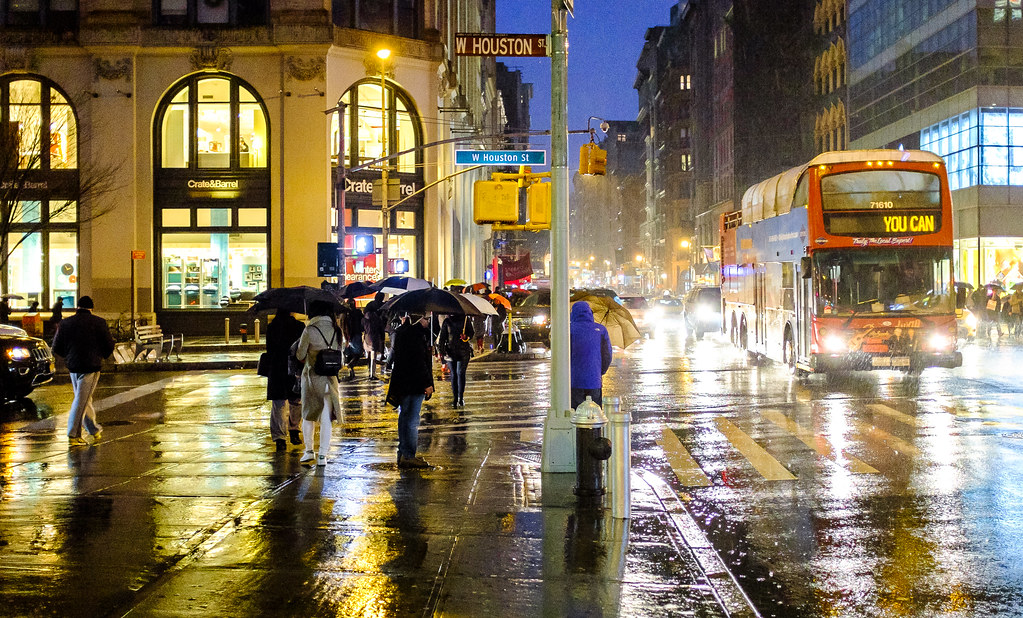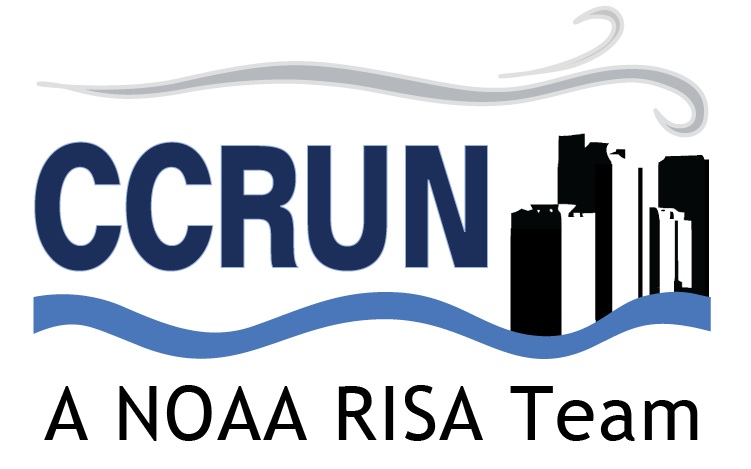CCRUN CROSS-CUTTING THEMES
Engineering and Urban Design
The Northeast is the most densely populated region of the country-a region where the built environment will play a central role in the ability of communities to adapt sustainably to a changing climate. The construction, operation, and maintenance of infrastructure systems also represent key components of our region’s portfolio of greenhouse gas emissions, making infrastructure decisions central in devising pathways toward carbon neutrality. Researchers in CCRUN’s engineering and urban design cross-cutting theme perform multidisciplinary research in support of multifunctional infrastructure design. The CCRUN engineering team addresses challenges associated with urban heat islands, compound flooding, combined sewer overflows (CSO), and ecosystem loss, developing locally tailored guidance for municipalities, often with a specific focus on nature-based solutions like green infrastructure. The team engages with stakeholders through partnerships and educational opportunities including a seminar series to produce usable and accessible information on building resilience in the built environment.

Current Research:
Nature-based solutions to the climate emergency
The CCRUN engineering and urban design team has been studying the various ways that natural systems can be harnessed in support of climate change adaptation and mitigation efforts. This multi-disciplinary work spans the fields of urban planning, ecohydrology, water-resource engineering, and climate science, involving both field and laboratory studies, and complex sensor networks. Three recent papers focus on the fate of precipitation falling on urban shrubs, and the role of vegetation canopies in mitigating the impact of rain drops on urban soils, and the stormwater capture performance of urban green roofs. We’ve also been investigating the relationship between soil moisture, precipitation, runoff, and temperature. This research seeks to a) determine whether low cost, cloud-enabled soil moisture sensors can be used to develop data-driven irrigation schedules for urban rain garden networks, b) establish whether by directing runoff from adjacent impervious surfaces onto urban green spaces, infiltration and evapotranspiration processes can be accelerated, promoting local thermal regulation, and enhanced groundwater recharge and c) whether irrigation of urban green roofs can be used to reduce heat penetration into the buildings during heat waves.
Preparing cities for climate change
Climate change will expose vulnerable urban populations to a range of new risks. CCRUN’s work at the city scale attempts to devise multifunctional infrastructure solutions that help make urban populations more resilient to a broad range of old and new risks. We’ve developed a framework for establishing goals for multifunctional green infrastructure systems (Camden, NJ), and have also been working to elucidate the multiple ecosystem services that a broad range of stakeholders expect out of investments in urban nature-based solutions (New York, NY). Using a coastal New Jersey town as a case study, we have been working to develop modeling frameworks that can be applied using publicly available information and software tools to enable local policy makers to understand different coastal risks and adaptation strategies, for example by identifying actuarily fair flood insurance premiums as a first step in a broader adaptation policy formulation process.
The impacts of extreme precipitation on urban drainage systems
Extreme precipitation events are getting more frequent, and stormwater utilities need to incorporate these changes into future stormwater planning. CCRUN has been studying various ways to incorporate climate change into synthetic future precipitation time series, so that these can be used in hydrologic and hydraulic (H&H) models. The team has also been trying to enhance the hydraulic efficiency of stormwater inlets, maximizing the value of grey and green drainage infrastructure when it is needed most. This work has involved the development of new, non-stationary weather generators, field monitoring of on-the-ground flow conditions during extreme weather, computational fluid dynamics (CFD), and other forms of integrated modeling. The team is also planning a series of webinars and workshops to engage small- and mid-sized stormwater utilities on research in this area.
Selected Publications:
Miller, S. M., & Montalto, F. A. (2019). Stakeholder perceptions of the ecosystem services provided by Green Infrastructure in New York City. Ecosystem Services, 37, 100928. https://doi.org/10.1016/j.ecoser.2019.100928
Yu, Z., Miller, S., Montalto, F., & Lall, U. (2018). The bridge between precipitation and temperature - Pressure Change Events: Modeling future non-stationary precipitation. Journal of Hydrology, 562, 346–357. https://doi.org/10.1016/j.jhydrol.2018.05.014
Abualfaraj, N., Cataldo, J., Elborolosy, Y., Fagan, D., Woerdeman, S., Carson, T., & Montalto, F. A. (2018). Monitoring and Modeling the Long-Term Rainfall-Runoff Response of the Jacob K. Javits Center Green Roof. Water, 10(11), 1494. https://doi.org/10.3390/w10111494
Rakestraw, E; Jacobson, S; Gurian, PL; and FA Montalto (2017) Quantification of stemflow in three isolated shrub species in an urban environment. Frontiers Built Environment. (In press)
Alizadehtazi, B; Gurian, PL; and FA Montalto. Impact of Successive Rainfall Events on the Dynamic Relationship between Vegetation Canopies, infiltration, Runoff and Recharge in Engineered Urban Green Infrastructure Systems. Ecohydrology. (In press)
Zidar, K; Belliveau-Nance, M; Cucchi, A; Denk, D; Kricun, A; O’Rourke, S; Rahman, S; Rangarajan, S; Rothstein, ER; Shih, J, O’Rourke, S; and FA Montalto. (2017) A Framework for Multifunctional Green Infrastructure Investment in Camden, NJ. Urban Planning. Vol. 2, Issue 3. pp 56-73. DOI: http://dx.doi.org/10.17645/up.v2i3.1038
Key Stakeholders:
NYC Department of Parks and Recreation
NYC Department of Environmental Protection
Camden County Municipal Utilities Authority
Jacob K. Javits Convention Center
Philadelphia Water Department
Contact:
Dr. Franco Montalto, P.E.
